#DIY Guitar Pedal
Text

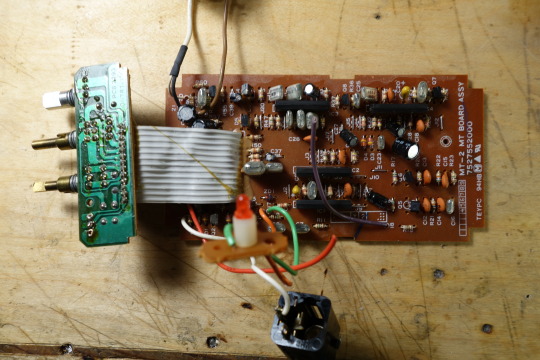
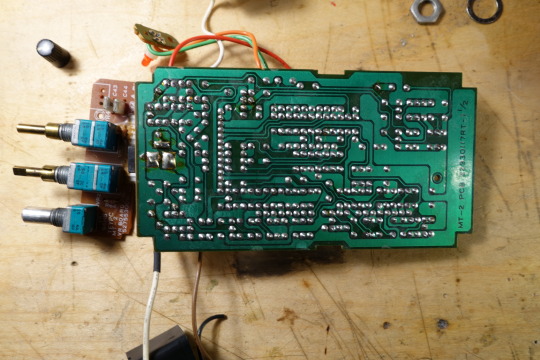
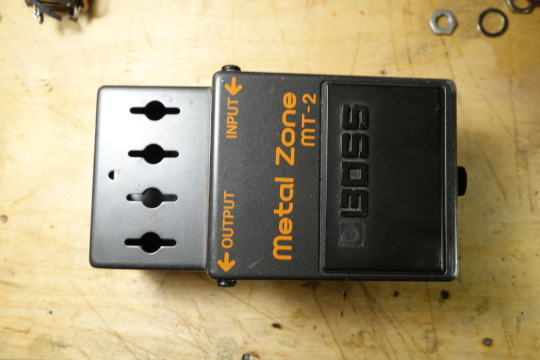


Boss Metal Zone MT-2, tear-down photos, with schematic.
possibly the worlds most common pedal, the metal zone has had a pretty bad reputation, but I actually like it, in the right circumstance.
the metal zone has a very strong pre-eq that mimics the pre-amp tone of a Marshall or fender. I assume this was intended to give a cheep solid state practice amp the tone of those classic amps.

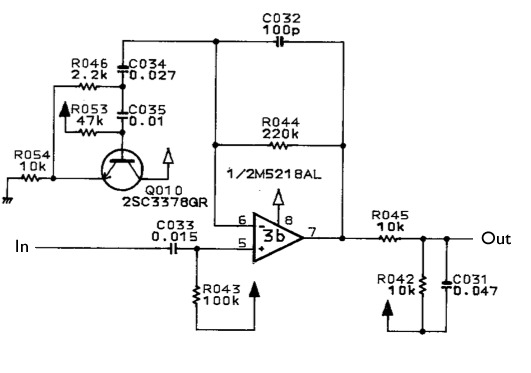
(chart of the frequency response, and schematic of the first stage of the MT-2)
it was common for early solid state amps to be more linear then a fender/Marshall, which have a very pronounced high end bump. (this is a result of the non-linarity of the tone control.) the high end bump can be flattering to a lead guitarist, and necessary to get a screaming hi-gain sound.
if the metal zone is placed before an amp that already has a pronounced hi end, it is going to sound very bad. I prefer to use it directly into a DI box, but it can also be run straight into a power amp with good results.
I'm in the process of modifying this particular pedal, and converting it to a rack mount distortion, to better fit my recording process.
#electric guitar#guitar pedals#guitar#guitar effects#effect pedals#distortion#diy electronics#electronics#technology#tech#diy music
46 notes
·
View notes
Text
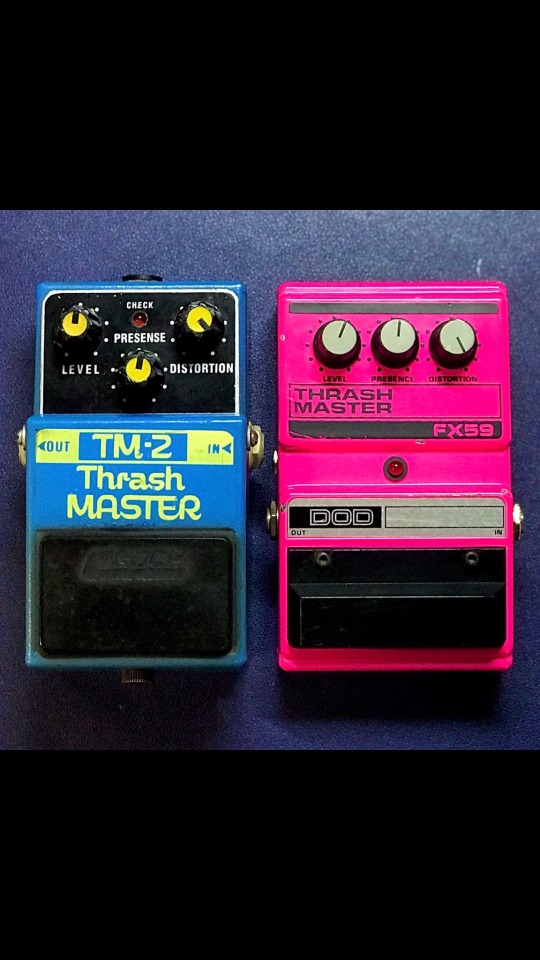
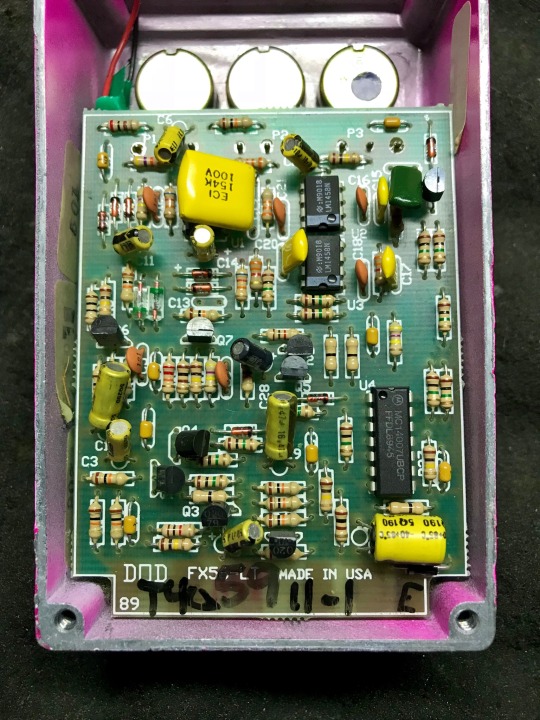
my DOD FX59 Thrash Master got here today. pictures can’t convey just how pink it is.
I wanted to take a look at the circuit, and when I did I realized how easy swapping the status LED would be, and how desperately it was begging for a pink LED instead of a dim red one. So I did!
A quick A/B between the Crock and DOD and they don’t sound the same. maybe I’ll record the differences sometime.
35 notes
·
View notes
Text
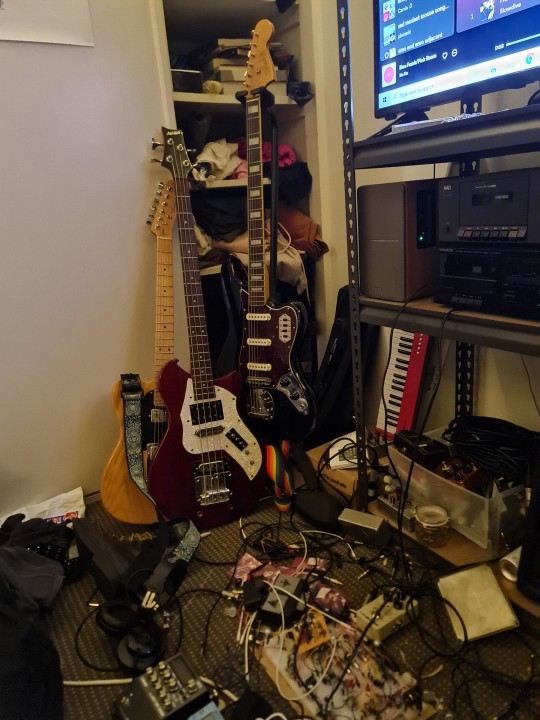
the girls (my instruments) are cuddling (leaning precariously against each other)
28 notes
·
View notes
Text



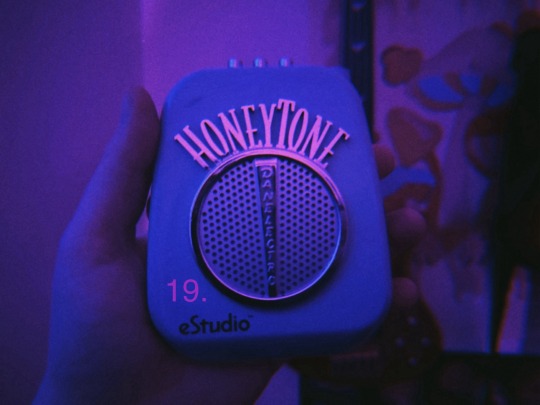
i could talk about these for HOURS, they're all my effects pedals!! i haven't fully tapped into all of them but i've been doing a lot of recording lately so i'll probably make some pretty noises with all of them some day in the near future :>
the first picture's order is all wonky because that's the order i have the pedals in the chain
1. EHX' Mel-9 (Mellotron emulator)
2. Alexander Pedals' Defender (OD/DST/FZ)
3. TC Electronic's Grand Magus (RAT similar)
4. Behringer's Noise Reducer (i use mostly as a mute when tuning)
5. TC Electronic's Afterglow (chorus)
6. Donner's Mod Square II (16 modulation in a mini casing)
7. TC Electronic's Hall of Fame 2 (digital reverb)
8. EHX' Oceans 12 (dual digital reverb/delay)
9. homemade JHS Little Black Box copy (1 setting buffer)
---not on the board---
10. TC Electronic's Sub'n'Up (octave)
11. Proco's RAT (distortion/fuzzish?) this one gets put back on the board every now and the
12. Dunlop's Crybaby (wah-wah)
13. Danelectro's Dan-Echo (echo/delay)
14. Joyo's Wow-Wah (auto-wah)
15. Donner's Echo Square
16. BOSS' ODB-3 (bass overdrive) i use this a lot when i play bass :)
17. BOSS' LMB-3 (bass limiter/enhancer)
18. BOSS' RBF-10 (rack mount flanger)
19. Danelectro's EStudio Honeytone E-15 (my dad's headphone amp from the mid-late '90s, not really a pedal but it can sorta be)
secret 20. 1-Spot Pro (power supply under the board, also not really a pedal but it's essential for the rig)

the shoegazer tap dancing on all those thangs
#dreampop#emo#shoegaze#dream pop#goth#noise#diy#trans artist#trans musician#trans music#transfem#trans woman#transgirl#transgender#queer#queer artist#electro harmonix#tc electronic#danelectro#jazzmaster#harmony#boss#effects pedals#guitar#guitar pedals#bass pedals#again don't rob me#i'd be really sad :(#too many tags#i'm sorry
10 notes
·
View notes
Text
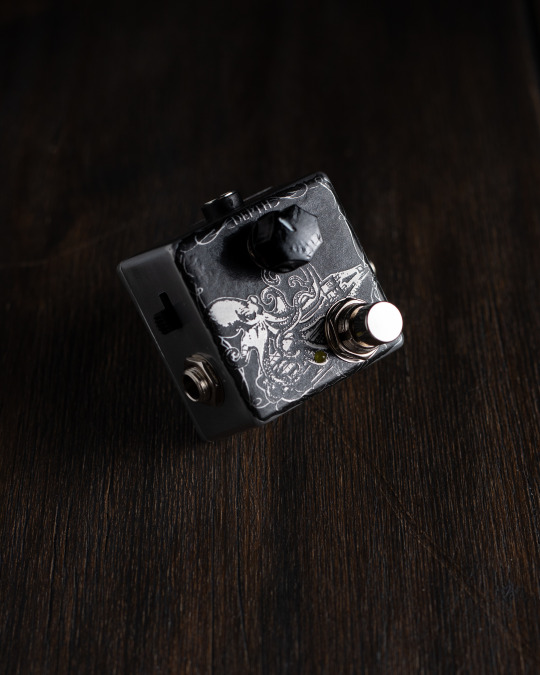

U-boat octave pedal in small-ish box. Enjoying the synth setting.
7 notes
·
View notes
Text
Made me first guitar pedal kit last night! It's a clone based off the rare Ibanez MT10 Mostortion pedal. Big in Nashville, but the original circuit sells for $650-1K depending, so the next best option was to make it my own damn self.
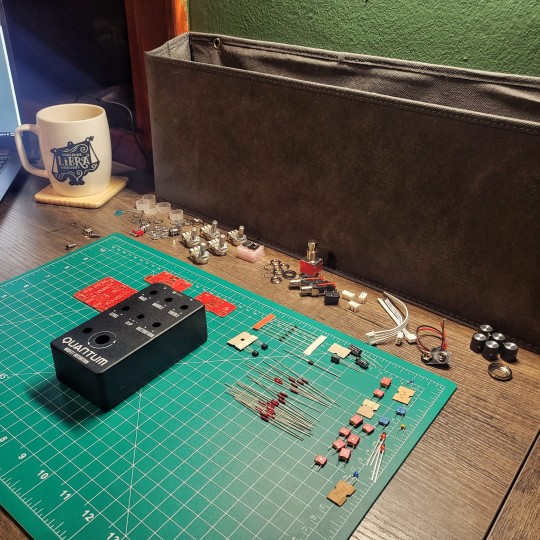
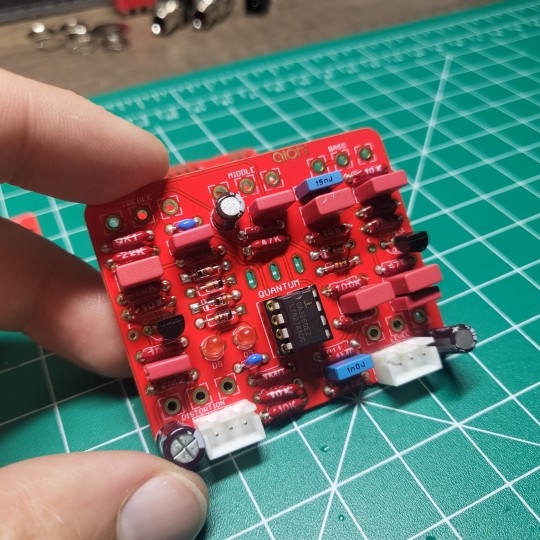


24 notes
·
View notes
Text
I came across it Today and it's old sentiment to me.

A years ago I've started to build this GREEN RINGER effect pedal which is still in progress. That time back I've been moving to the new flat and haven't got enough time to go through thousands of parts to find the right ones to get it done. Then it fell into dust. I was using old parts from broken Fender amps I collected in the past years and this one effect meant to be greener than green just by its look. I was really excited how it's gonna sounds like depending on these parts taken off the old circuits and none of these would be normally used for this particular type of wiring. I should keep these parts to fix some other amps but I found this idea to be quite interesting.
Ringmode effects such as Gonkulator by DOD likewise this Green Ringer are my favourite distortions, right after Fuzz effects. Could be something sentimental about oldschool era of those wierd dial tones.
https://youtu.be/HR2I6xIn1uQ?si=5ACupMaK-6xqfAjF
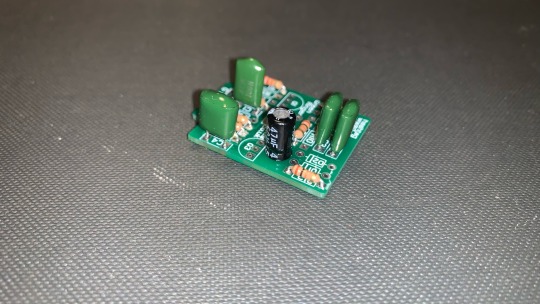

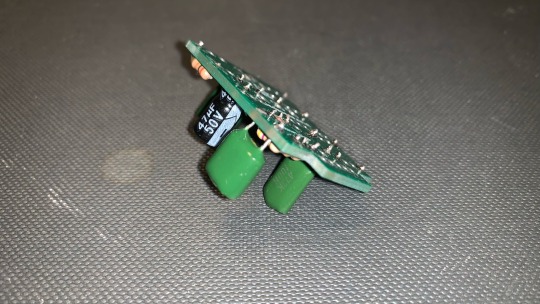



#green ringer#greenringer#ging mode#effect pedal#butique pedal#diy effects#diyeffects#effectpedal#fx pedal#guitar effect#guitar effects#distortion#fuzz
2 notes
·
View notes
Text
Shea Haulia Super Usagi Drive!
Black Cat overdrive with Russian K42 capacitors mounted on recycled baby defib board coupled with usb mates. 2nd side (in series) is mosfet boost into EQD Speaker Cranker. Yairi ADY-1
7 notes
·
View notes
Text
DIY Dumble-like sounding MOSFET Overdrive

The Hermida Zendrive guitar pedal we will study, assemble and listen to today is a true masterpiece. Many say its sound is close to the Holy Grail of guitar amplification - Dumble Overdrive Special.
Other people are more pessimistic in their judgments. Still, the precise response to the picking dynamics, the Voicing tuning options, and the sheer beauty of this overdrive's sound are simply impossible not to love.
But before we study the Lovepedal Zendrive or its copy of the Landtone Phoenix song, or the Aion effects Azimuth dynamic overdrive, we'll study the evolution of the MOSFET overdrives that finally resulted in the development of this gem.
Fulltone OCD

Mike Fuller was one of the first to start using MOSFETs instead of diodes to limit the amplified guitar signal in 2004.
His Obsessive-Compulsive Drive overdrive-distortion pedal is built on a standard circuit with one dual op amp. The first operational amplifier, X1, amplifies the amplitude of the guitar signal by a factor from 8 to 463 times, depending on the position of the drive control X3. This is a 1-megohm potentiometer.

Further, through resistor R9, the signal is fed to the limiter, which comprises 2N7000 MOSFETs M1 and M2 connected in parallel. A germanium diode D1 - 1N34A is additionally included in series with M2, which makes the limiter asymmetrical and, therefore, makes more interesting sound.
A limiter in overdrives is usually included in the negative feedback circuit of an operational amplifier (i.e., in parallel with C6). Such a limiter is called a soft limiter.
And here, a hard limitation is applied: clipping sections are included between the preamplifier output of the gain section and the virtual ground - half of the supply voltage Vref, formed by resistors R4 and R7.
Virtual ground is used in the unipolar powering of operational amplifiers to amplify analog signals, such as audio signals. The guitar signal does not change from zero to plus but from minus to plus, passing through zero.
To prevent the signal from being limited to the circuit's ground, it is shifted in the plus direction by half the supply voltage.
Such hard limiting is typical for distortion pedals. But by using MOSFETs instead of diodes or LEDs, the top of the signal is not cut hard but softly rounded. Therefore, OCD can work as both distortion and overdrive.
Due to the smoothed peaks of the limited signal, the sound is highly dependent on the sound's attack dynamics. For rock and especially blues, this is very valuable. With modern metal pickups that compress the dynamic range of the signal, it can help make solos sounding more sweet.
The second operational amplifier X3 amplifies the limited signal by a factor of 3.8, correcting its timbre. Capacitors C6 and C9 prevent the self-excitation of operational amplifiers at high frequencies.
Next is a simple passive tone knob, which implies a treble leak circuit. Potentiometer X4 10 kilohms and capacitor C11 47 nanofarads are connected in the same way as on the pickguard of any electric guitar.
The Switch1 switch changes the circuit's output impedance as if the high-impedance and low-impedance pickups were switched. When it's open, you get a transparent overdrive like the Klon Centaur, and when it's closed, you can get a more aggressive sound like the Marshall Plexi.
Hermida Audio Zendrive

The Zendrive pedal's authors, Hermida audio technology (now produced by LOVEPEDAL LLC), have undoubtedly studied the Fulltone OCD thoroughly. Let's find the differences between the two circuits.
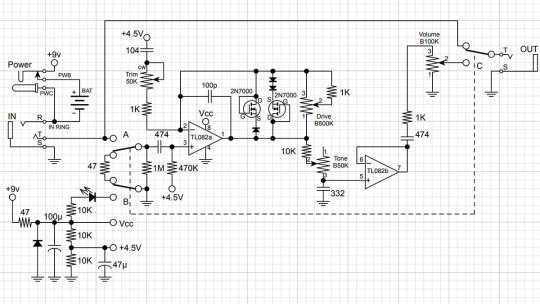
First, the limiter is included in the operational amplifier feedback, that is, between the output and the inverting input, not between the output and virtual ground. That is, here we have a soft limiter.
Secondly, one diode is added in series with each MOSFET. Clipping remains asymmetric: we have one diode in the left arm of the limiter and two diodes in the right arm.
Third, the second operational amplifier is used as a voltage repeater, aka buffer: the output is directly connected to the inverting input.
Fourth, the tone control is implemented a little differently: two OCD`s switchable resistors are replaced by a potentiometer.
And finally, the most critical, fifth difference. A potentiometer is included in the tone correction circuit between the inverting input of the first operational amplifier and the artificial midpoint.
This fourth knob, Voicing, or Character, allows you to smoothly adjust the lower frequencies in the overdrive structure over a wide range, similar to the Resonance control on many tube guitar amps.
The potentiometer is signed as a trimmer in the diagram because some pedal makers don't want to install a fourth knob on the pedal`s body. This is what Landtone did when developing the Phoenix Song Overdrive DIY kit.
The developer suggests installing the trimmer on the PCB, and to access it, you need to disassemble the pedal by unscrewing the footswitch nut and taking out the PCB.
But I will not be lazy to drill an extra hole in the pedal body and install a potentiometer with a knob, connected to PCB by wires instead of the trimmer. Because I consider this regulator simply invaluable and irreplaceable.

Before we get to assembly and testing, let's look at another pedal with a similar adjustment. However, it is based not on the Fulltone OCD but on the Ibanez Tube Screamer.
The Precision Drive

This is a signature pedal by Misha Mansour of Periphery, manufactured by Horizon Devices. Compared to the original Overdrive Pro TS808, the circuit adds a noise suppressor, which we will not consider, and an exciting ATTACK switch.
The Precision Drive scheme was studied and partially replicated by PedalPCB and PCB Guitar Mania. They are manufacturers of DIY kits for guitarists. Their products are called Dwarven Hammer and Collision Drive, respectively. A noise gate is not provided there, but the attack switch is implemented. This is the main difference between Precision Drive and many other overdrive pedals.

In the Fulltone OCD schematic, we saw a resistor switch at the tone shaping circuit in the output section. The Zendrive has a variable resistor in the preamp's RC circuit which is controlling the overdrive structure.
Precision Drive has a constant resistor in the same place, between the inverting input of the overdrive section operational amplifier and the virtual ground, but the capacitors are switched.
This is the same thing: we change the time constant of the RC circuit, which adjusts the audio signal's frequency spectrum. At the same time as the time constant, the complex impedance changes, thus the gain.
A resistor is a resistance to both DC and AC current. At the same time, a capacitor is only resistant to AC current because DC current does not flow through a capacitor. Since DC current does not flow through our RC circuit, there is no difference between adjusting the resistance and switching the capacitance.
But the active/reactive ratio affects the circuit's Quality factor, i.e., its resonance. It's no coincidence that the knob on guitar amplifiers, which adjusts the same frequencies as our potentiometer or switch, is often called RESONANCE. And it is used to adjust to the resonance of the electromechanical system - the loudspeakers in the cabinet, along with the masses of air in and around it.
The reactive impedance accumulates energy and gives it away, except for losses due to dielectric recharging and magnetizing the magnetic core in inductors. This is why coreless inductors are often used in high-end equipment, so-called air inductors. They weigh a lot, take up a lot of space, and are expensive because copper is more expensive than steel. But these are the laws of physics on which technology is based.

Unlike reactive impedance, active resistance converts electrical energy into heat, thus reducing the Q-factor. In some cases, it is necessary and useful. In others, it is harmful. Or it simply creates a unique sound character.
That's why switching capacitors and turning the potentiometer knob in the feedback circuit of an audio frequency amplifier is almost the same thing, but not quite. And it's great that there are such different variants of guitar overdrive pedals!
Landtone Phoenix Song Overdrive
Now you can hear how my Zendrive from the Landtone OD-1 kit sounds, with a Seymour-Duncan SH4 humbucker on a Gibson MM Explorer guitar, into an Orange MT20 with a Torpedo Captor X. And see how I assembled the pedal and also a kitten walking around the table and prancing around.
youtube
I liked the pedal, especially its fourth magic Voicing knob, which does things to the sound that other tone controls can't. I also liked the bird on the body. Because I love birds. And in the music world, the decoration of instruments and hardware plays no small role because it inspires creativity. And the fact that the pedal is assembled by my hands also warms my soul and creates inspiration.
3 notes
·
View notes
Text
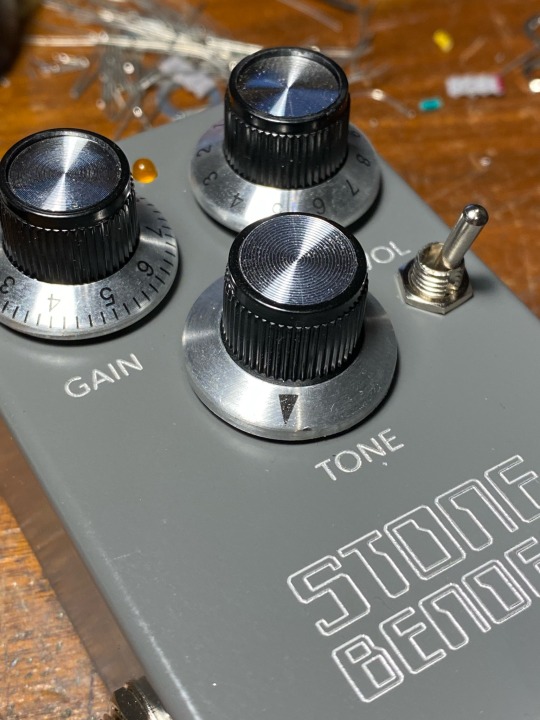
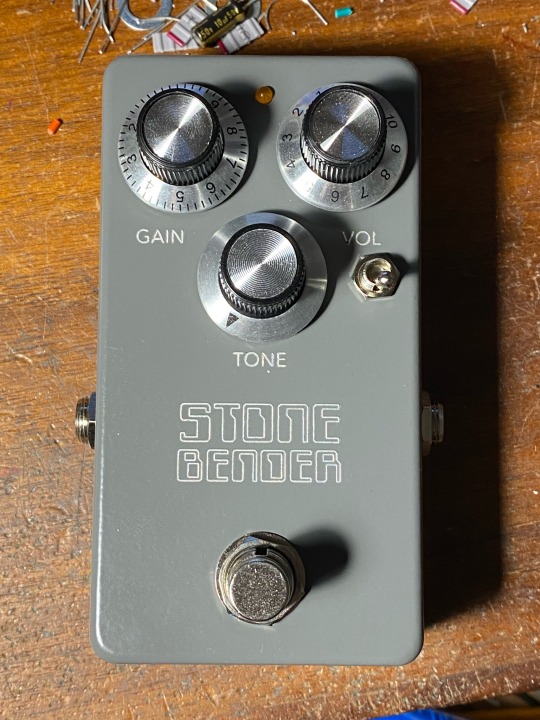


Silicon Tonebender. These BC109 sound great.
http://www.super-freq.com/stone-bender-2/
#stompbox#guitar effects#diy#effects pedal#stomp box#guitar#fuzz#distortion#guitar pedals#super freq#tonebender#pcbway
19 notes
·
View notes
Text
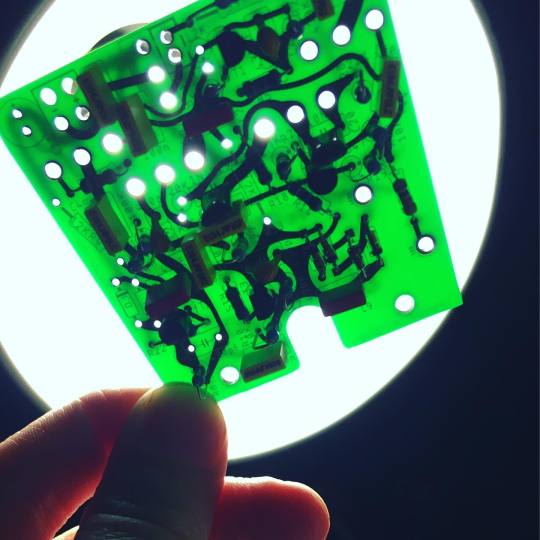
this is the pcb I layed out for my totem bass fuzz. Its a hybrid germanium/silicon fuzz, with a 2 knob bass/treble tone control.
It must sound pretty good because Ive sold every one I've ever built.
27 notes
·
View notes
Photo
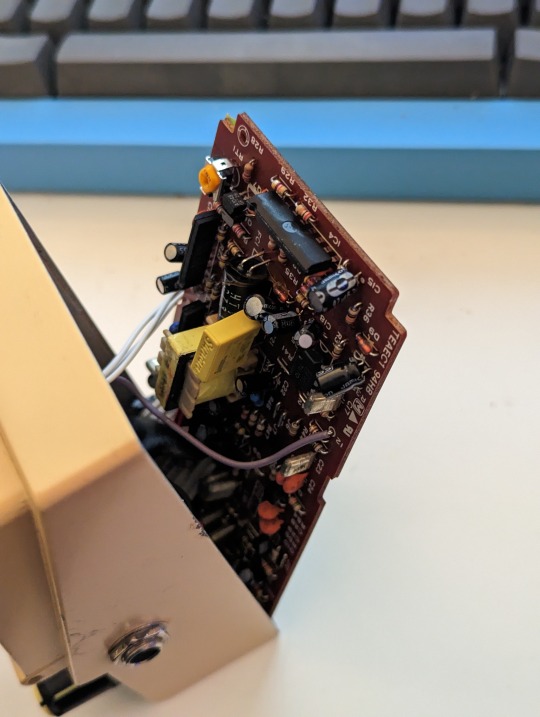


Finished modding my Boss AW-2 auto wah. It's got an up/down switch for the filter direction, a wide wah sweep, a lower 'quack' frequency, I've fixed how thin it sounds and generally unfucked a pretty bleh design. I also swapped the switch for a clicky one out of a keyboard because the stock switch was a little sketchy.
I pulled the battery clip out because I’ll never use it and tucked the filter direction switch in the battery compartment.
3 notes
·
View notes
Text
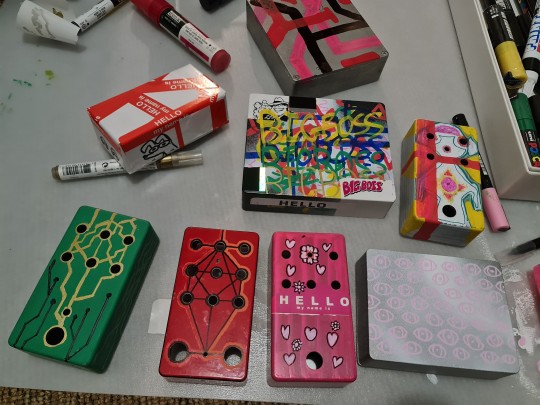
painted enclosures with my friend today :)
15 notes
·
View notes
Text

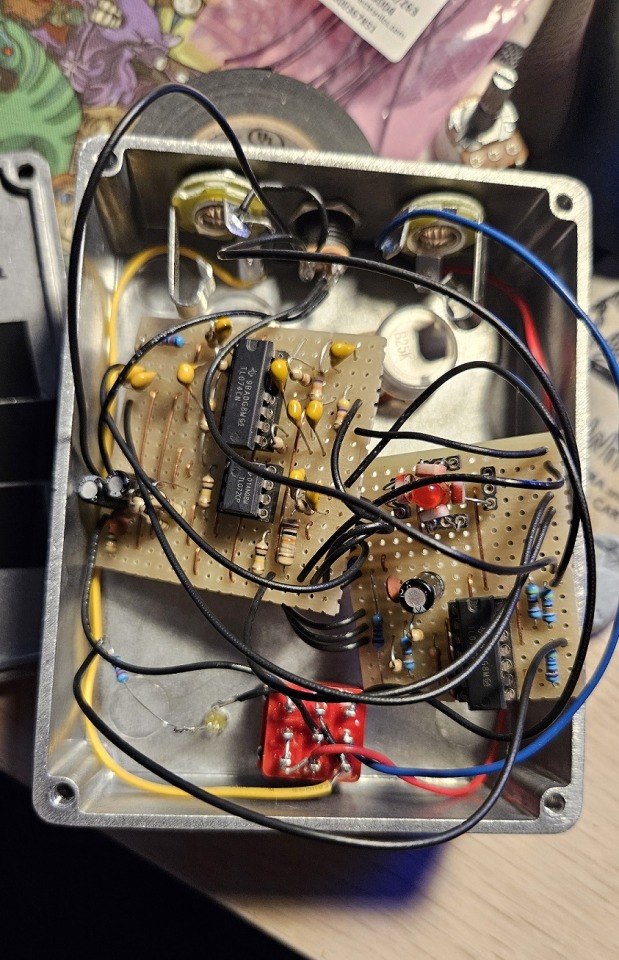
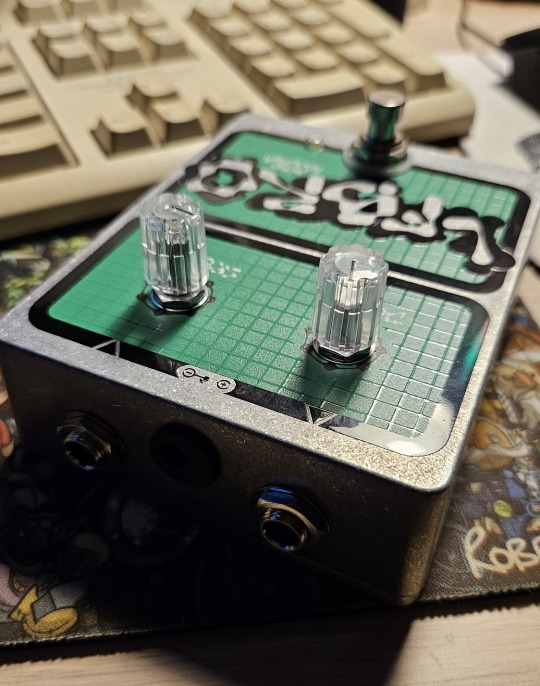
With the time I haven't been using drawing, I've been making guitar pedals. It's been an enriching experience, basically legos that feel a bit more useful and discovering just how many things are just potentiometers and ldrs.
This is the L.F.Bro, a stripboard build bought from a blind circuit sale by Different Noises. It's a univibe-type phase shifter (description from the instructions) which feels like a wavy hp/lp filter type of effect.
The design was inspired by EHX bare designs and printed through Tayda.
0 notes
Text
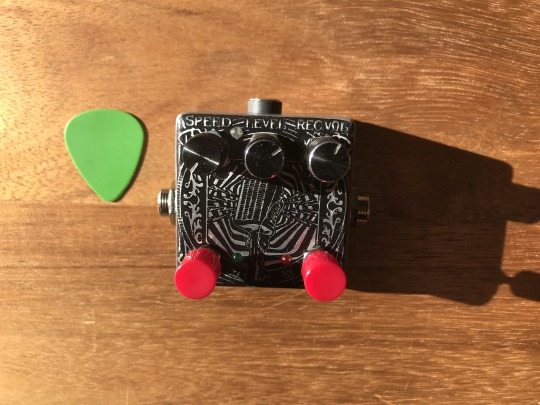
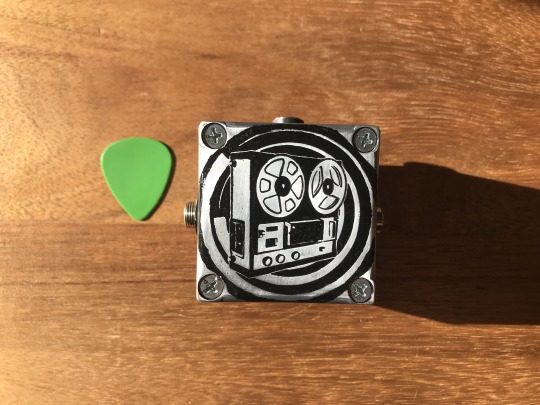
Small loFi looper with modulation.
6 notes
·
View notes
Text


I made a fuzz pedal! It was from a kit, so I didn’t design the PCB, but I put it together myself, with some of the ropiest soldering you’ll ever see. It all adds to the DIY feel though. It sounds great, though. I’m really happy with how it turned out!
I’ve bought a bunch more pedal parts so I’m hoping to make some more real soon. Any suggestions about what I should make?
1 note
·
View note